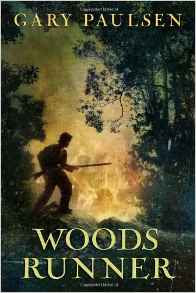I found this in my door one day last month. My friend Lisa, renowned for her attempts to broaden my horizons with highbrow reading and movie recommendations, dropped it off. This book is unlike most of her usual suggestions, but the first line did grab my attention. "When all is said and done, killing my mother came easily." Alice Sebold is the author of The Lovely Bones which I enjoyed for its unusual point of view and character development. And so, I began reading The Almost Moon in a quest to discover what quirkiness lay within its plot.
The quirk factor was almost too much for me when, after killing her mother, the main character proceeds to engage in something even more taboo, but I forged on in order to learn the fate of the poor, twisted souls in this unconventional story. Since I can't give away the ending, I guess I'll share some peculiar tidbits I garnered from this book.
First, I learned about the Melungeon people from Tennessee. I had never heard of these interracial groups who inhabited the southeastern United States and seemingly comprised European, African, and Native American ethnicities. At one point in the story, the main character reminisces about trying to convince her young daughters that their family descended from the Melungeons. Quirky.
In another creepy subplot, the main character recalls the history of the town her father came from. It had been closed down and the residents “relocated” in order for a dam to redirect the waters of the Delaware River through it. Despite the engineers best calculations, the flooding had failed, leaving the town a muddy wreck of ruined buildings, which the character visits as a teenager with her long-suffering father. Eerie, but as far as I can tell, not a true story. My Google search for the town of Lambeth, a forty minute drive from Phoenixville, PA, came up short. Double quirk.
My favorite line in the book is when the main character's grown daughter describes the murdered mother's knitting, "Why is it that everything she knits resembles vomit?" The narrator expands on the memory, "The girls were just entering adulthood, and that year, my mother had outdone herself, knitting a full-length sweater coat for each of them. She used a variety of yarns in a striated design, and sure enough, though it was meant to be autumnal in effect, the result seemed more intestinal." Funny. Reminded me of the mothball-scented, scratchy, wool sweaters my aunt used to give me and my cousins every Christmas. I am a knitter and with so many beautiful yarn colors to choose from, I often wonder why old people are attracted to vomit-colored options.
Clearly, The Almost Moon characters are complicated and flawed, and they wrestle with issues of mental illness. They are self-absorbed, odd, and tormented. I can relate. So I didn't mind spending a short period of time inhabiting their off-kilter world of matricide, suicide and self-indulgence.


